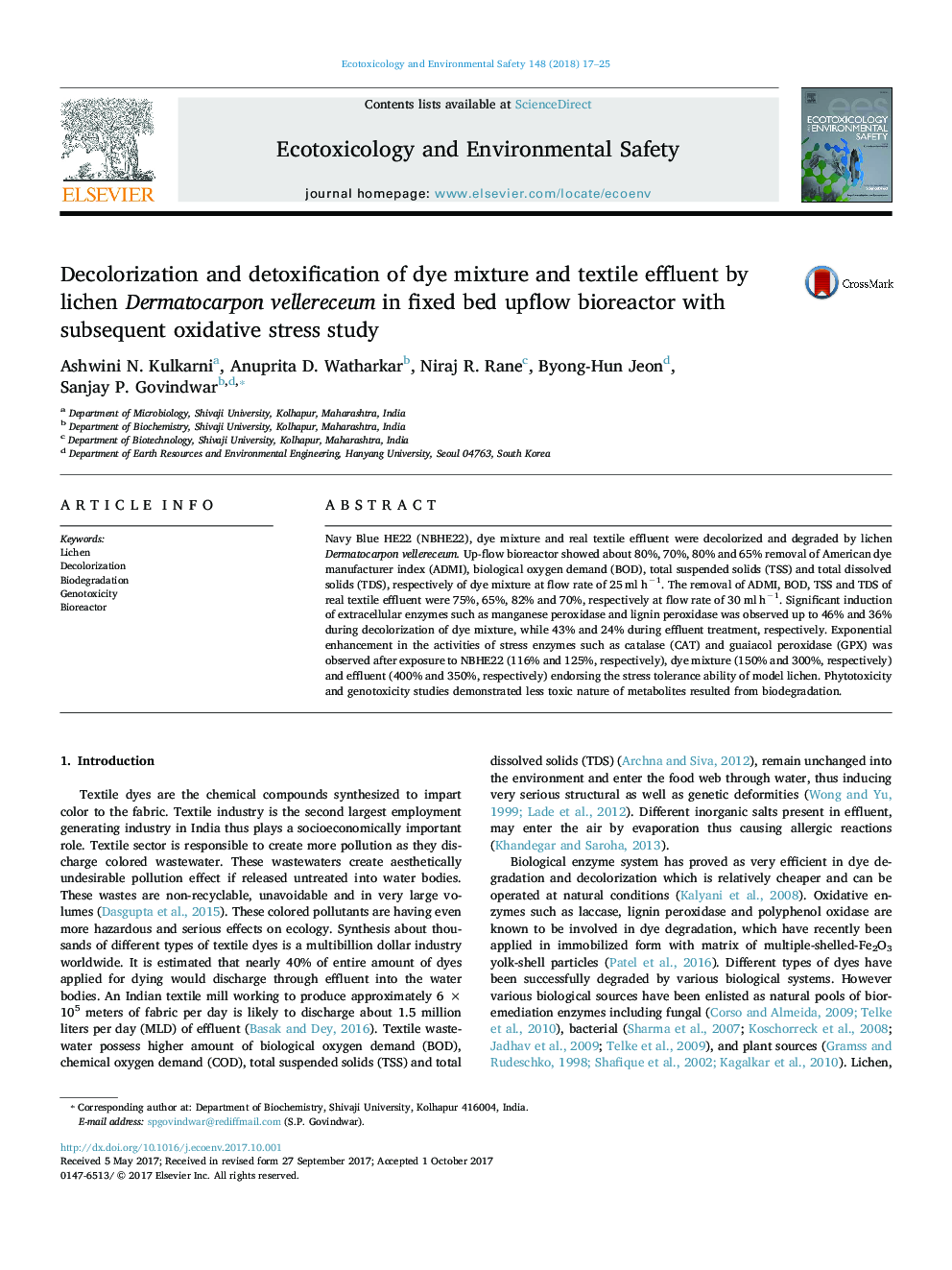| کد مقاله | کد نشریه | سال انتشار | مقاله انگلیسی | نسخه تمام متن |
|---|---|---|---|---|
| 5747451 | 1618916 | 2018 | 9 صفحه PDF | دانلود رایگان |

- Effective decolorization and biotransformation of NBHE22, dye mixture and effluent.
- Fixed bed semi continuous up-flow bioreactor for efficient decolorization of dye mixture and effluent.
- Significant induction of extracellular oxidative enzymes of lichen Dermatocarpon vellereceum.
- Stress tolerance ability of model lichen.
- Enhanced application of biomass free treated dye mixture and effluent solutions for repeated dye degradation.
Navy Blue HE22 (NBHE22), dye mixture and real textile effluent were decolorized and degraded by lichen Dermatocarpon vellereceum. Up-flow bioreactor showed about 80%, 70%, 80% and 65% removal of American dye manufacturer index (ADMI), biological oxygen demand (BOD), total suspended solids (TSS) and total dissolved solids (TDS), respectively of dye mixture at flow rate of 25 ml hâ1. The removal of ADMI, BOD, TSS and TDS of real textile effluent were 75%, 65%, 82% and 70%, respectively at flow rate of 30 ml hâ1. Significant induction of extracellular enzymes such as manganese peroxidase and lignin peroxidase was observed up to 46% and 36% during decolorization of dye mixture, while 43% and 24% during effluent treatment, respectively. Exponential enhancement in the activities of stress enzymes such as catalase (CAT) and guaiacol peroxidase (GPX) was observed after exposure to NBHE22 (116% and 125%, respectively), dye mixture (150% and 300%, respectively) and effluent (400% and 350%, respectively) endorsing the stress tolerance ability of model lichen. Phytotoxicity and genotoxicity studies demonstrated less toxic nature of metabolites resulted from biodegradation.
Journal: Ecotoxicology and Environmental Safety - Volume 148, February 2018, Pages 17-25